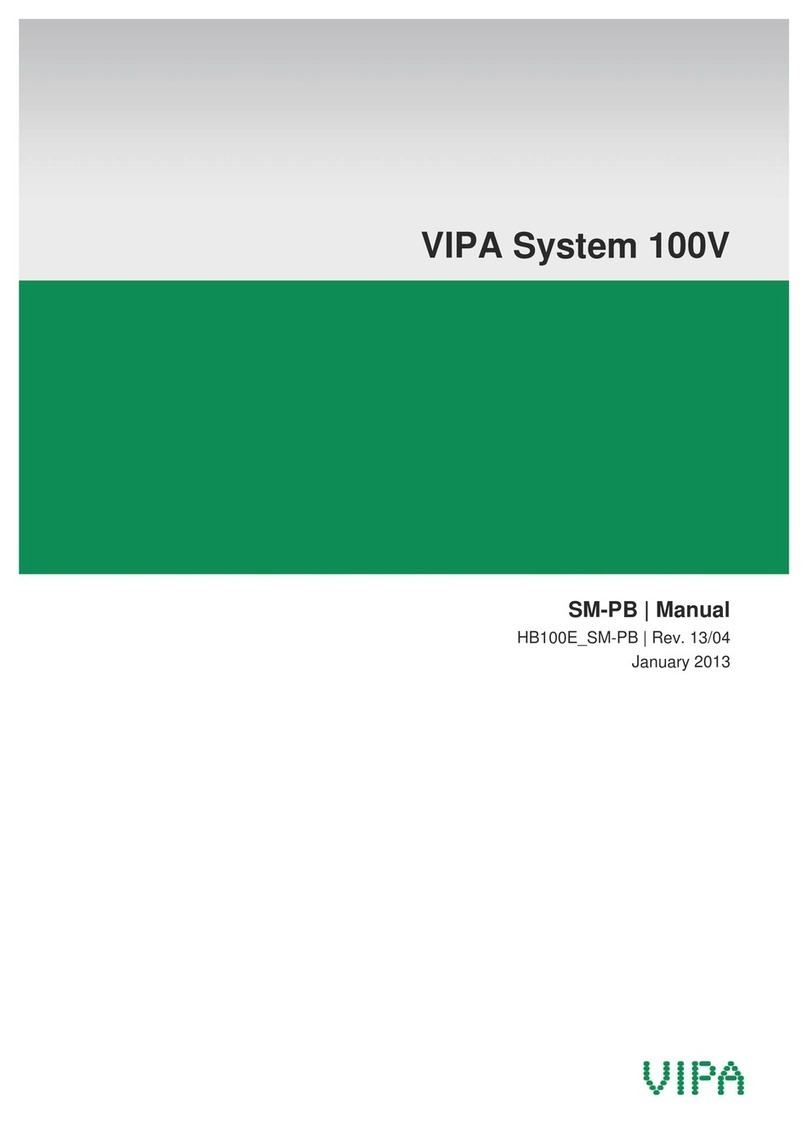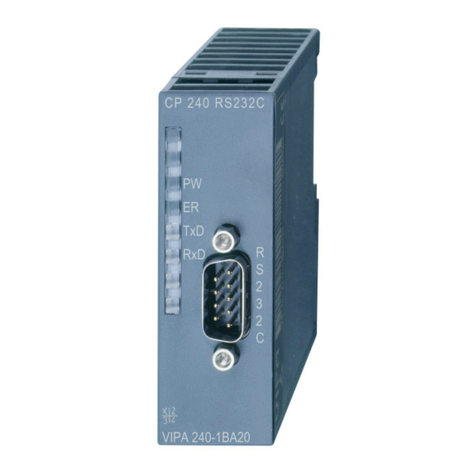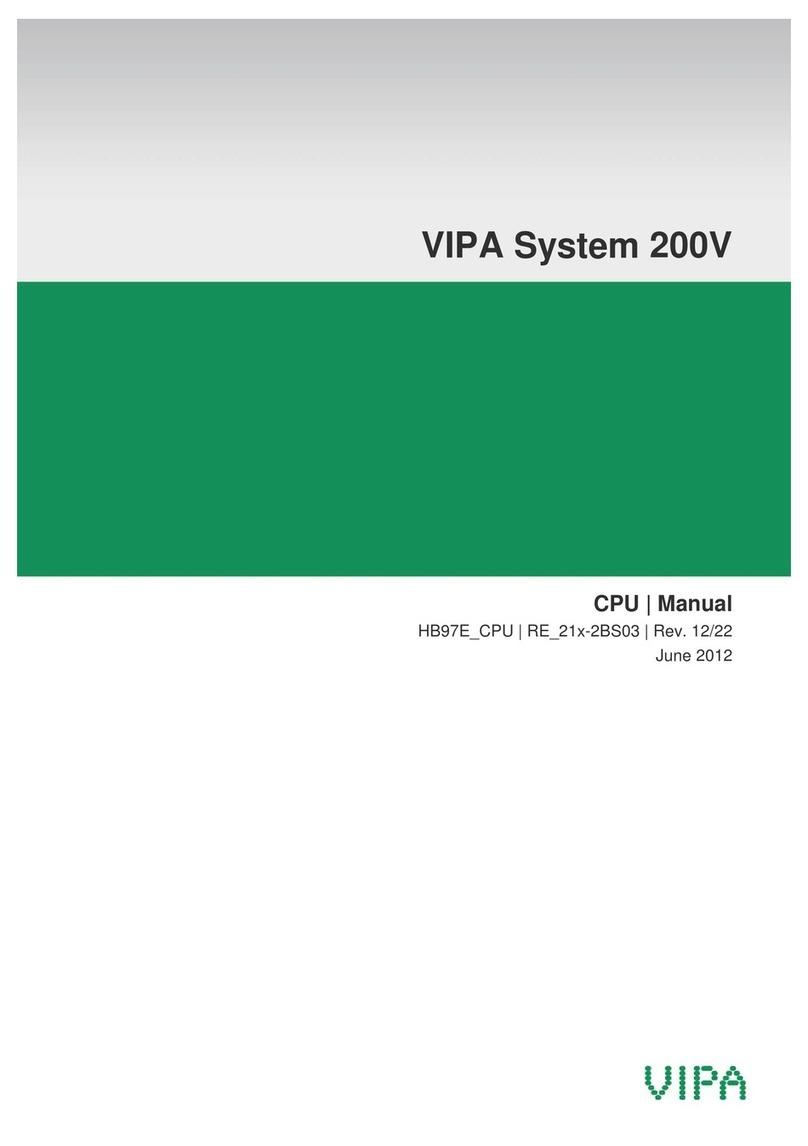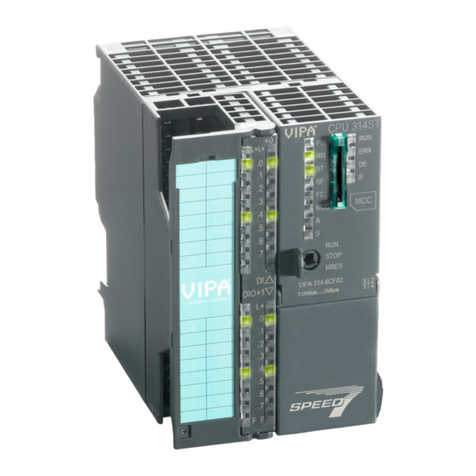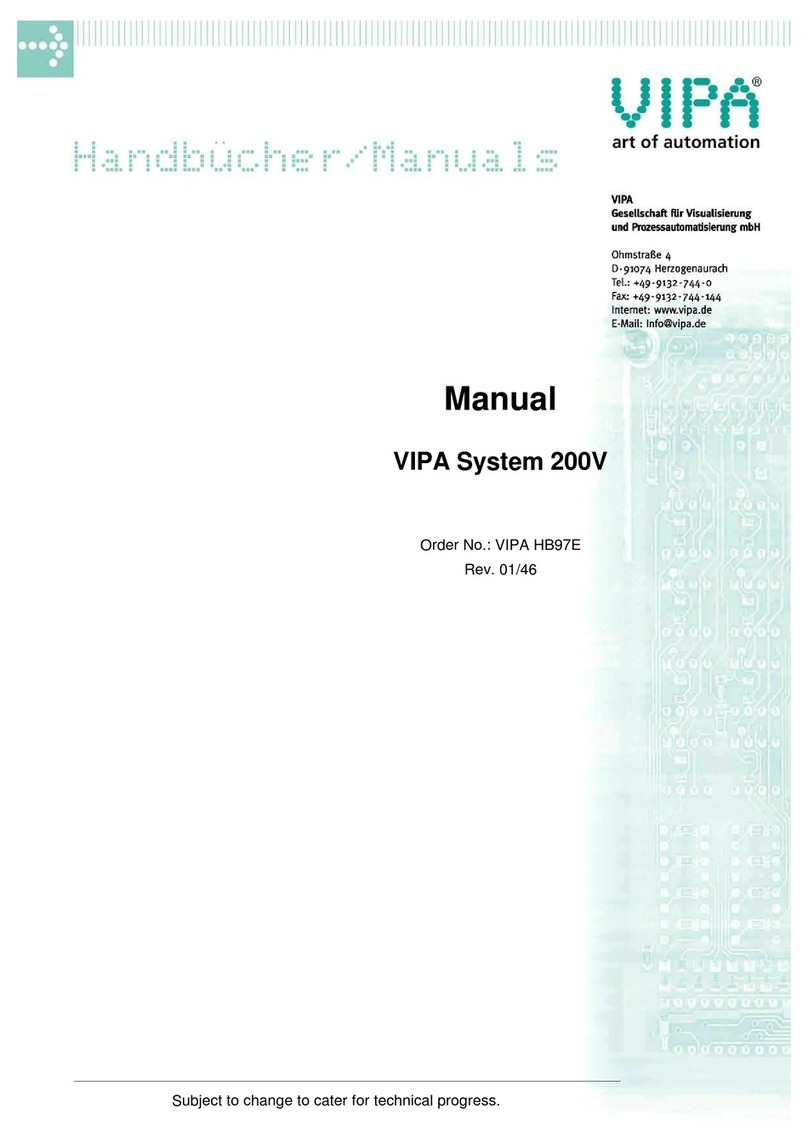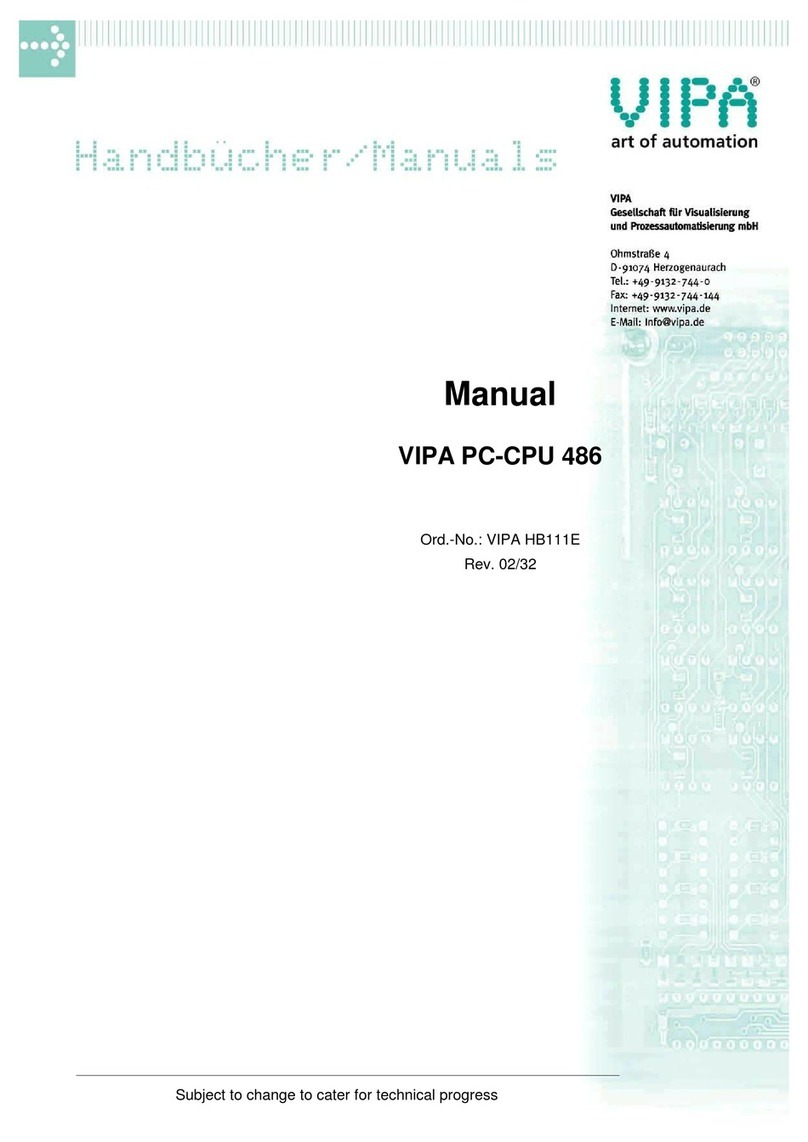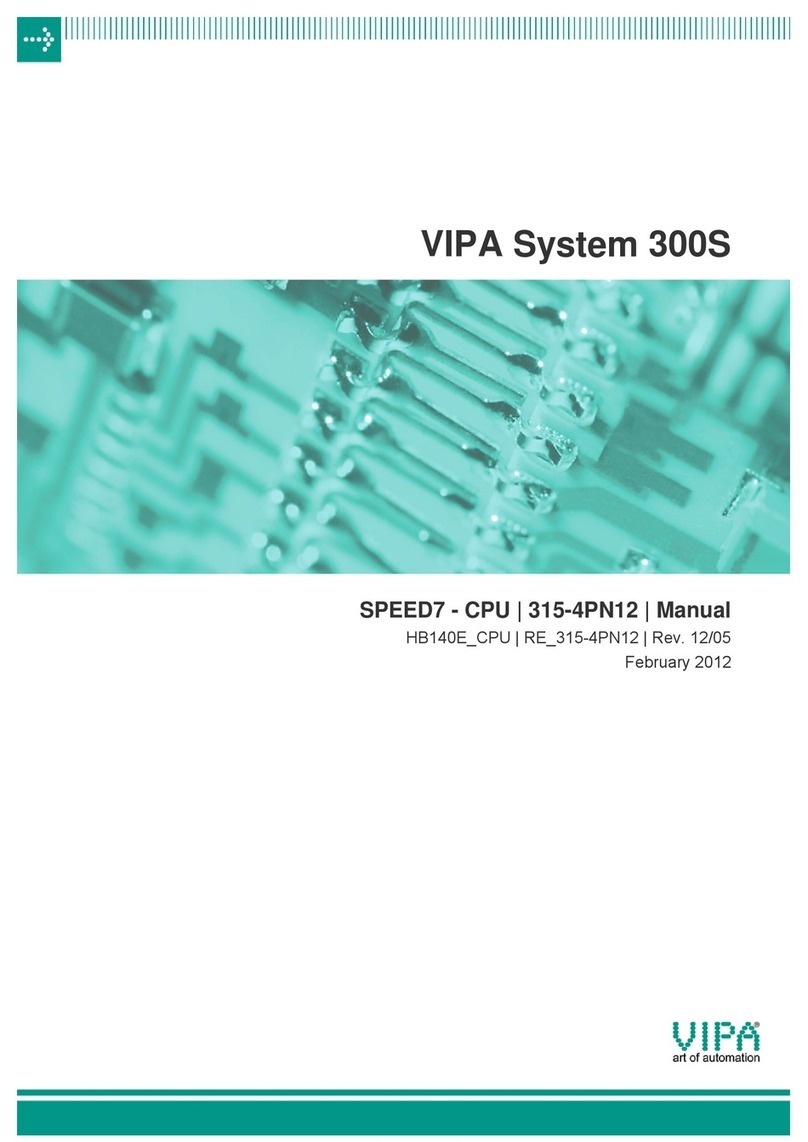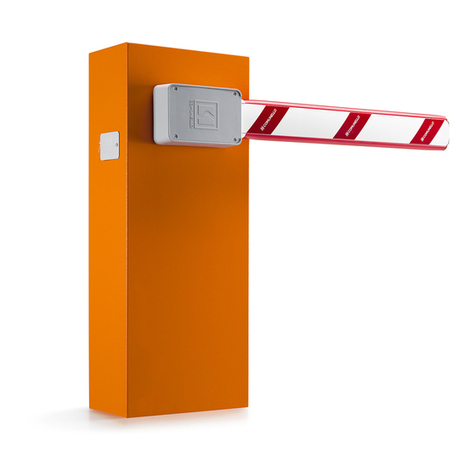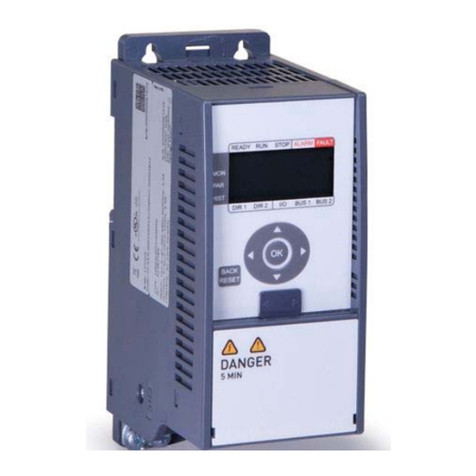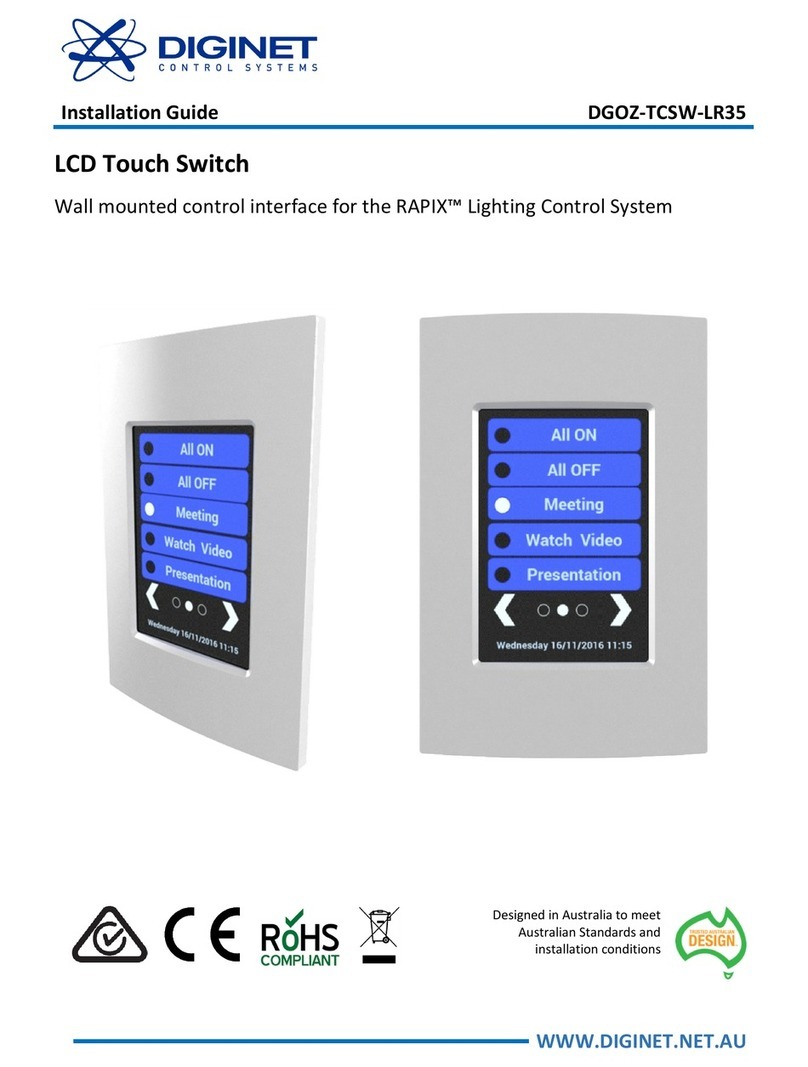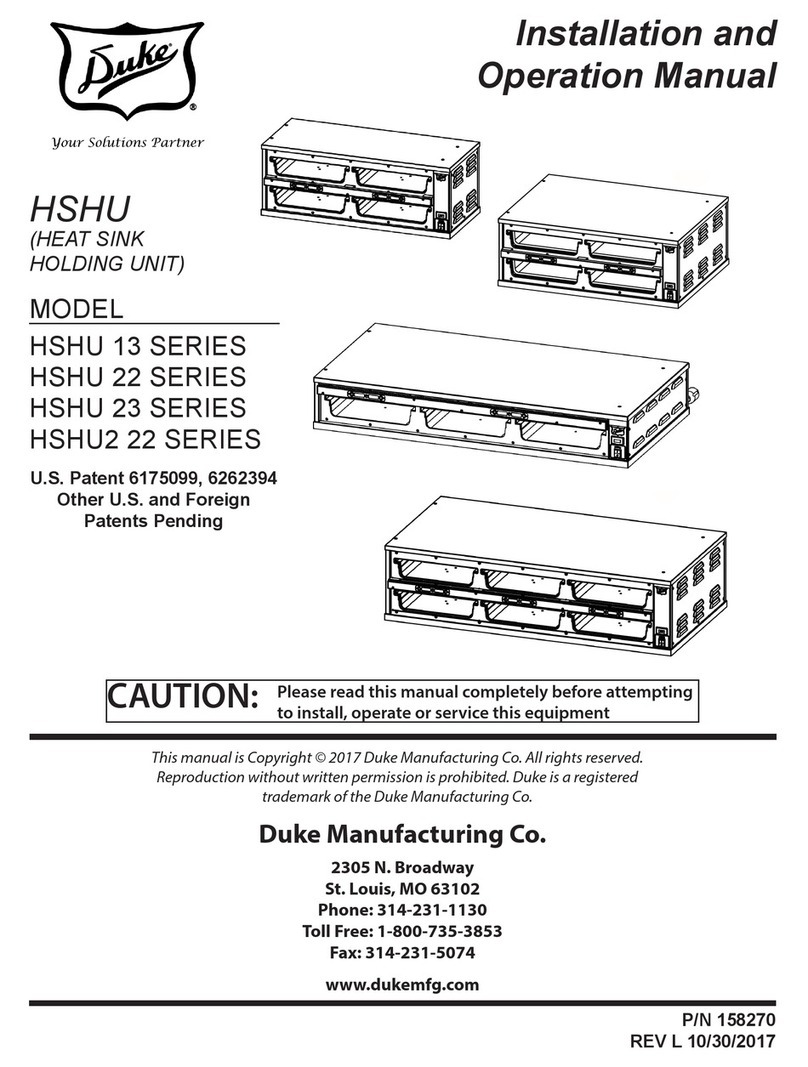
Manual VIPA System 300V Contents
HB130E - CP - RE_343-2AH10 - Rev. 08/41 i
Contents
User considerations.................................................................................1
Safety information....................................................................................2
Chapter 1 Basics..............................................................................1-1
Safety Information for Users................................................................. 1-2
General description of the System 300V .............................................. 1-3
Components......................................................................................... 1-4
Basics AS-i........................................................................................... 1-5
Chapter 2 Assembly and installation guidelines............................2-1
Overview .............................................................................................. 2-2
Installation dimensions ......................................................................... 2-3
Installation at the profile rail.................................................................. 2-4
Cabling................................................................................................. 2-6
Installation Guidelines ........................................................................ 2-10
Chapter 3 Hardware description .....................................................3-1
Properties............................................................................................. 3-2
Structure .............................................................................................. 3-3
Technical Data ..................................................................................... 3-6
Chapter 4 Deployment CP 343-2P ASI ............................................4-1
Fast introduction................................................................................... 4-2
Hardware configuration ........................................................................ 4-3
Button configuration ............................................................................. 4-6
Uploading the current configuration to PG............................................ 4-7
Configuration AS-i slave....................................................................... 4-8
Data transfer with the user program ................................................... 4-10
Diagnostic functions ........................................................................... 4-14
Troubleshooting and error behavior.................................................... 4-17
Help for trouble shooting .................................................................... 4-18
Firmware update ................................................................................ 4-20
Chapter 5 Deployment Command interface ...................................5-1
Command interface FC "ASI_3422" ..................................................... 5-2
Deployment of the command interface................................................. 5-6
Set_Permanent_Parameter.................................................................. 5-8
Get_Permanent_Parameter ................................................................. 5-8
Write_Parameter.................................................................................. 5-9
Read_Parameter.................................................................................. 5-9
Store_Actual_Parameters .................................................................. 5-10
Set_Extended_Permanent_Configuration .......................................... 5-10
Get_Extended_Permanent_Configuration.......................................... 5-11
Store_Actual_Configuration................................................................ 5-11
Read_Extended_Actual_Configuration............................................... 5-12
Set_LPS............................................................................................. 5-12
Set_Offline_Mode .............................................................................. 5-13

